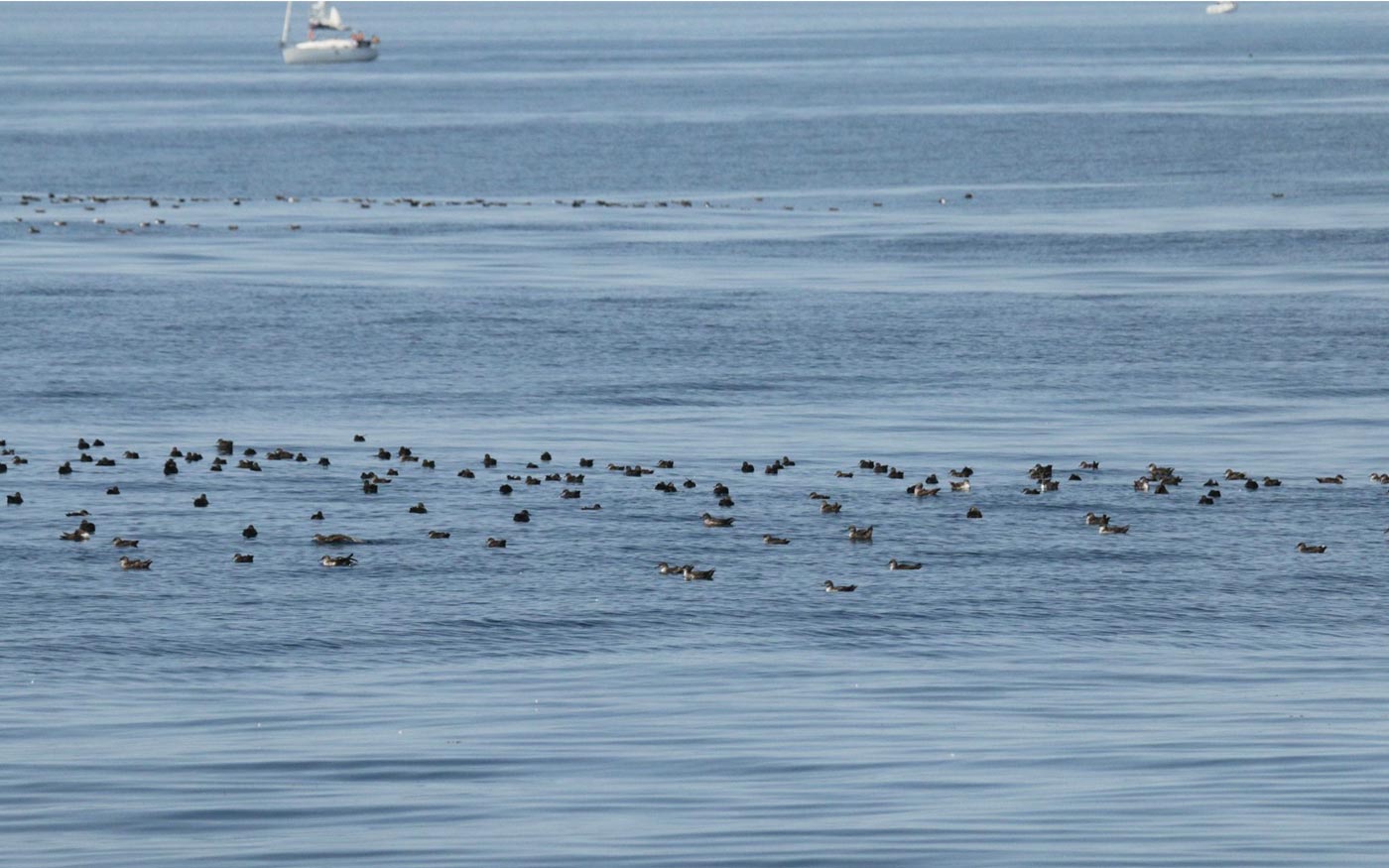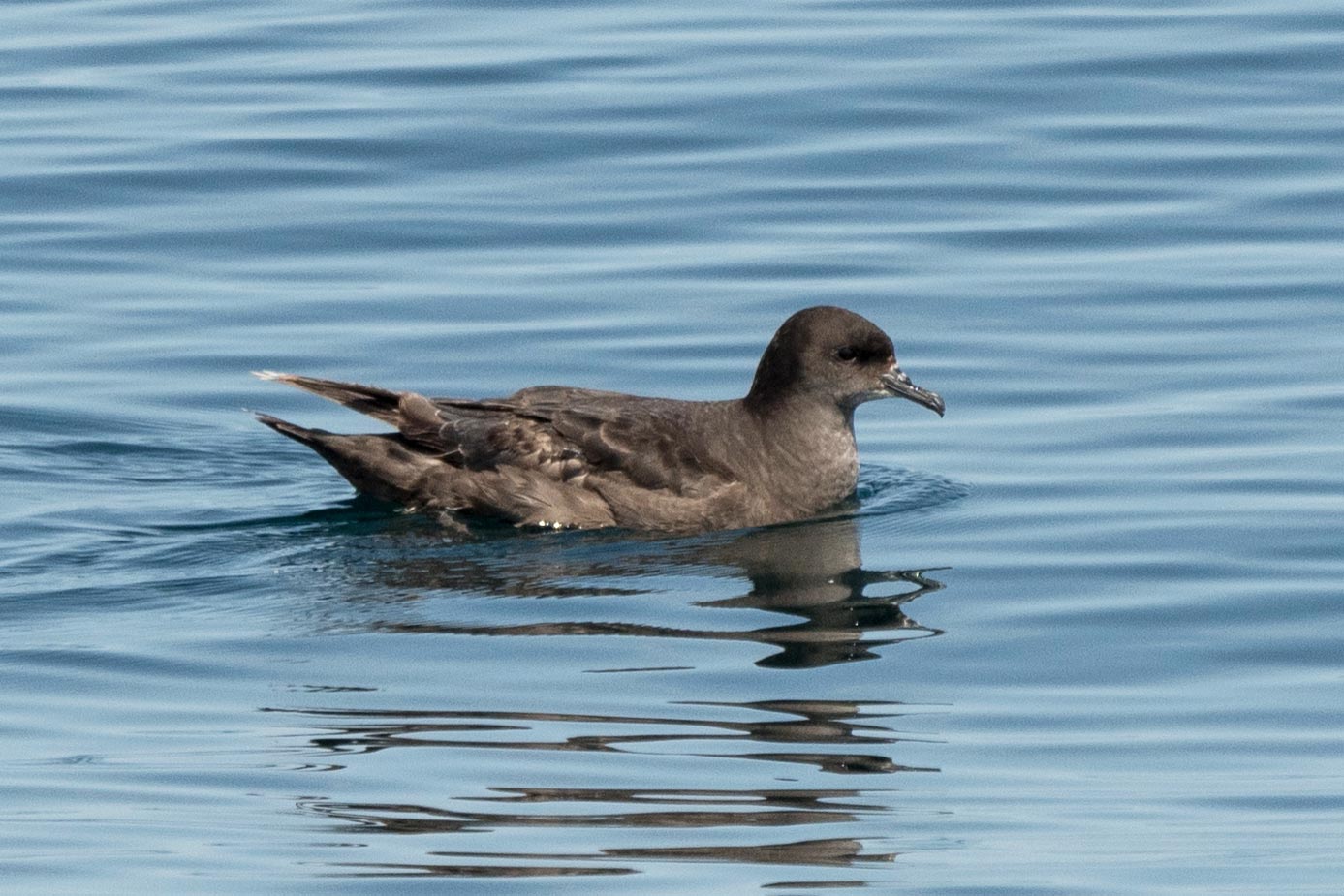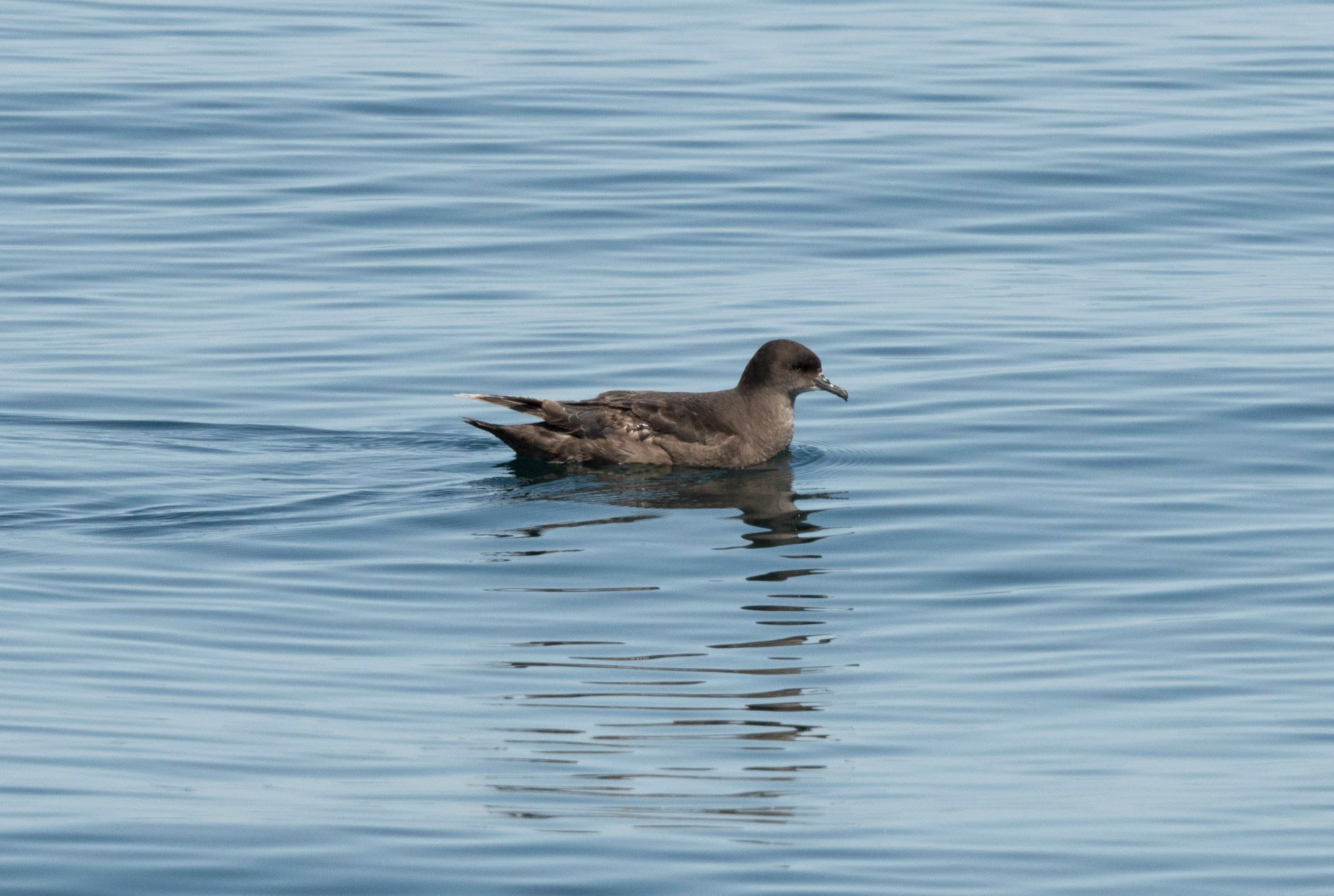On 7 August 2020, we were at sea for a Faune Océan pelagic trip in Mor Braz bay (southern Brittany, France), from the Gulf of Morbihan, at Locmariaquer. Faune Océan is a bird and sea mammal-watching company founded by Sylvain Reyt in 2019. During each trip, Sylvain guides and comments the observations, and he is helped by a team of naturalists who assist in sighting and identifying birds and cetaceans. That day, Sébastien was one of the naturalists on board.
All day, the sea was very calm and there was almost no wind. As a result, the shearwaters were not very active and most were seen on the water, not flying. In the early afternoon, as we were passing through the Grands Cardinaux area (south-east of Hoëdic Island), a raft of Balearic Shearwaters was encountered. Sylvain asked the captain to get closer to be able to count them. We then realised that there were numerous other rafts of shearwaters present, with some extending for several hundred metres. Trying to count them would therefore not be an easy task, and would take some time!

Thousands of Balearic Shearwaters were rafting south-east of Hoëdic Island on 7 August 2020 (Sylvain Reyt).
As not everyone on board was necessarily interested in birds, we were concerned that some might find the counting process long and boring. On the other hand, the sea conditions were ideal to see plumage details, and might allow us to find Sooty, Cory's or Great Shearwaters among the Balearics. Fortunately, there was something for everyone during the morning, with some sunfish and a large pod of 120 Common Dolphins also appearing.
After weighing up the situation, Sylvain finally decided to go ahead and count the groups of birds. Laurent Rouzic, the day's skipper, then carried out some highly skillful manoeuvres, slowly and meticulously skirting the edges of each group, while avoiding any disturbance that might make the birds take off. After a short while, at the front of a raft, a small, dark shearwater was sitting on the water on its own. We had a good look at it through binoculars and were quite hesitant about its identification. The bird was first called as a Sooty Shearwater, due to its overall dark colouration. The possibility of a Balearic Shearwater was then raised, because of the pale throat and a rather squat appearance. Although size was difficult to assess without any other shearwaters in close proximity, the bird appeared rather compact and small. Given our hesitation, we took a few photos, leaving time for each birder to get a really good look, and then continued on our way.

Short-tailed Shearwater, at sea in Mor Braz Bay, Brittany, 7 August 2020 (Sébastien Roques).
Counting the birds took us a little over an hour and the result was breathtaking – even if the rafts did only contain Balearic Shearwaters (with the exception of the mystery bird!), a total of 6,400 were finally counted. For that reason alone, we felt it had been worth taking our time, and indeed, this number could well be a record for Brittany. Such numbers are also remarkable because they constitute a significant proportion of the global population of Balearic Shearwater, which is estimated at around 25,000 individuals.
The next day, when taking a closer look at the photos, Sylvain realised that the overall silhouette of this mystery bird was really quite distinctive. With its square head and short bill, it recalled the plates of Short-tailed Shearwaters seen a few months earlier in a 2019 paper by Bob Flood. Sylvain notified Sébastien and several exchanges followed. As the discussion progressed, the possibility of Short-tailed became more serious. The bill measurements were taken by Sébastien and the proportions matched perfectly with that species. Nevertheless, in our minds, an important disadvantage remained – we did not have any in-flight pictures to determine the underwing colour.

Short-tailed Shearwater, at sea in Mor Braz Bay, Brittany, 7 August 2020 (Sébastien Roques).
In order to progress, we asked Killian Mullarney and Robert Flood for their opinions. Both identified the bird as a Short-tailed Shearwater. Killian made further bill measurements, confirming ours, then Robert provided us with a detailed explanation to confirm the identification. We were so happy and relieved that the identification could finally be confirmed!
One of the most important features of Short-tailed concerns the measurements and proportions of the three main parts of the upper bill: nasal tubes, mid-section gap (distance between nasal tubes and unguis) and maxillary unguis. The short-billed appearance of this species is thus translated into proportionally longer nasal tubes and a shorter mid-section gap when compared to Balearic and Sooty. In our case the proportion of nasal tubes is around 33% compared to a mean of 28% for Balearic and 25.7% for Sooty (Flood & Fisher, 2019). As for the mid-section gap, this is around 26% compared to 31.9% for Balearic and 34.4% for Sooty (Flood & Fisher, 2019). This feature, associated with the squarish head appearance, a steep forehead and a short, thick neck already constitute solid evidence for a Short-tailed Shearwater. The bird also appears compact when sitting on the sea in comparison to Sooty and this is accentuated by the previously mentioned head and neck features. The overall colour of the bird is more dark brown than the greyish-brown of Balearic, while the pale chin contrasting with the darker brown head is also a distinctive feature of the Short-tailed.
At the time, the species was known only to have been recorded once previously in the Western Palearctic (a moribund bird found in Ireland in June 2020), thus "our" bird became (temporarily!) the second and a first for France. Keen to broadcast this exceptional news, Sylvain published photos of the bird on Facebook. Seeing the pictures, Yann Février, a birder from the Côtes-d'Armor (northern Brittany, France) was intrigued by its appearance, which reminded him uncannily of a bird he had observed in 2015, during a Balearic Shearwater monitoring session at sea. He then consulted the photos he had taken that day and forwarded them to Hugo Touzé. Finding them highly promising for Short-tailed Shearwater, Hugo sent them to Bob Flood, who confirmed the identification the following day. What a twist to our story…!
This record therefore became the first for both France and the WP. Although this news was somewhat disappointing to us and we may never really get over it, this story will remain with us forever and provides us with the perfect excuse to continue to look for rare tubenoses on the Faune Océan pelagic trips. And last but by no means least, we are very happy to have helped put a spotlight on this species. This will certainly help attract the attention of WP birders and perhaps confirm Bob's hypothesis that it might venture into the North Atlantic more frequently than expected.
We would also like to thank Philippa Benson, who proofread and corrected our text, the all the naturalists on board that day (Romain Dufau, Manuela Maillet, Blaise Raymond and Pierre Rigalleau), and all the birders who helped us identify this bird, and in particular Bob Flood and Killian Mullarney for their important input.


